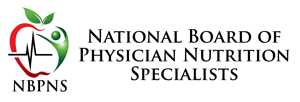Case Studies 2
Case 2: Enteral Nutrition
An 82-year-old female is 4 days status-post successful hip replacement surgery following a hip fracture that occurred when she fell off her sofa. She will require prolonged rehabilitation in a hospital setting. The patient has a history of mild dementia and is presently unable to feed herself due to an exacerbation of confusion post-operatively. According to family members, the patient lives alone, does her own shopping and prepares her own meals. She generally stays in the house with limited physical activity. She is on Medicare as her sole source of income. The patient cannot give a medical history. Current body weight is 80% of ideal body weight. PE reveals normal vital signs and an operative skin incision that appears to be healing well. There is moderate skeletal muscle and fat wasting. Her tongue is reddish and the papillae are flattened. Skin exam reveals numerous petechiae and her hair is very easily pluckable. The patient has been receiving intravenous hydration fluids with electrolytes since operation. Lab tests are within normal limits except for low concentrations of blood urea nitrogen (4 mg/dL, normal range 10 – 20), creatinine (0.2 mg/dl, normal < 1.5) and albumin (2.2 g/dL, normal range 3.5 – 5.5). Serum calcium and phosphorus are in the low-normal range.
Question 1: What are potential causes for malnutrition in this patient?
- Likely poor dietary intake at home (low income, cares for herself, mild dementia). The hip fracture and operation are catabolic stressors, but these events occurred too acutely to be responsible for the muscle wasting in this patient.
Question 2: Her physical examination findings suggest depletion of what specific micronutrients?
- Vitamin C (petechiae), zinc (hair loss), folate, B12, iron, several B-vitamins (all can cause glossitis, most common with folate depletion). Several surveys suggest that US elderly have a 10 to 20% incidence of depletion of one or more micronutrients
Question 3: Does her history alone suggest the possibility of depletion of another specific nutrient and should this be confirmed?
- Vitamin D (lack of sunlight, likely poor intake of calcium-rich foods given body weight, easy fracture of hip). Incidence up to 25% in US elderly. A low 25-hydroxy vitamin D level in serum will confirm deficiency (1, 25-Vitamin D levels are usually normal in dietary deficiency because the increased serum PTH and low phosphorus levels stimulate renal 1-hydroxylation of 25-(OH)-Vit D).
Question 4: Why may her serum urea nitrogen, creatinine and albumin levels be decreased? What non-nutritional factors cause a decrease in serum albumin concentrations?
- All of these proteins may be low due to protein depletion/substrate lack (decreased urea generated from amino acid metabolism, less hepatic synthesis of albumin, decreased muscle creatine content). Intravenous fluid given during operation and inflammation associated with hip fracture probably contribute to the low albumin levels as well. Common non-nutritional causes of low albumin levels in hospitalized patients are fluid overload (dilution) and infection/inflammation (decreased hepatic synthesis and especially increased plasma clearance/albumin catabolic rate). Some patients also lose albumin via the gut (“protein-losing enteropathy”) or kidney (nephrotic syndrome).
Question 5: What would be the best option for specialized feeding in this patient?
- Her gut is functional so intravenous feeding is contraindicated. Enteral tube feeding via a nasogastric or nasal-small bowel feeding tube. A supplemental mutivitamin/mineral preparation can be given empirically via the feeding tube. A standard, non-elemental nutrient formula is appropriate as the patient has been without oral food for only a short time. A semi-elemental formula may be appropriate for at least several days prior to transition to a standard formula in the clinical settings of severe illness, prolonged NPO status, short bowel syndrome, or inflammatory bowel disease. There is no evidence of significant hepatic or renal dysfunction that would necessitate use of concentrated, low protein (and in the case of renal failure) low electrolyte feeds.
